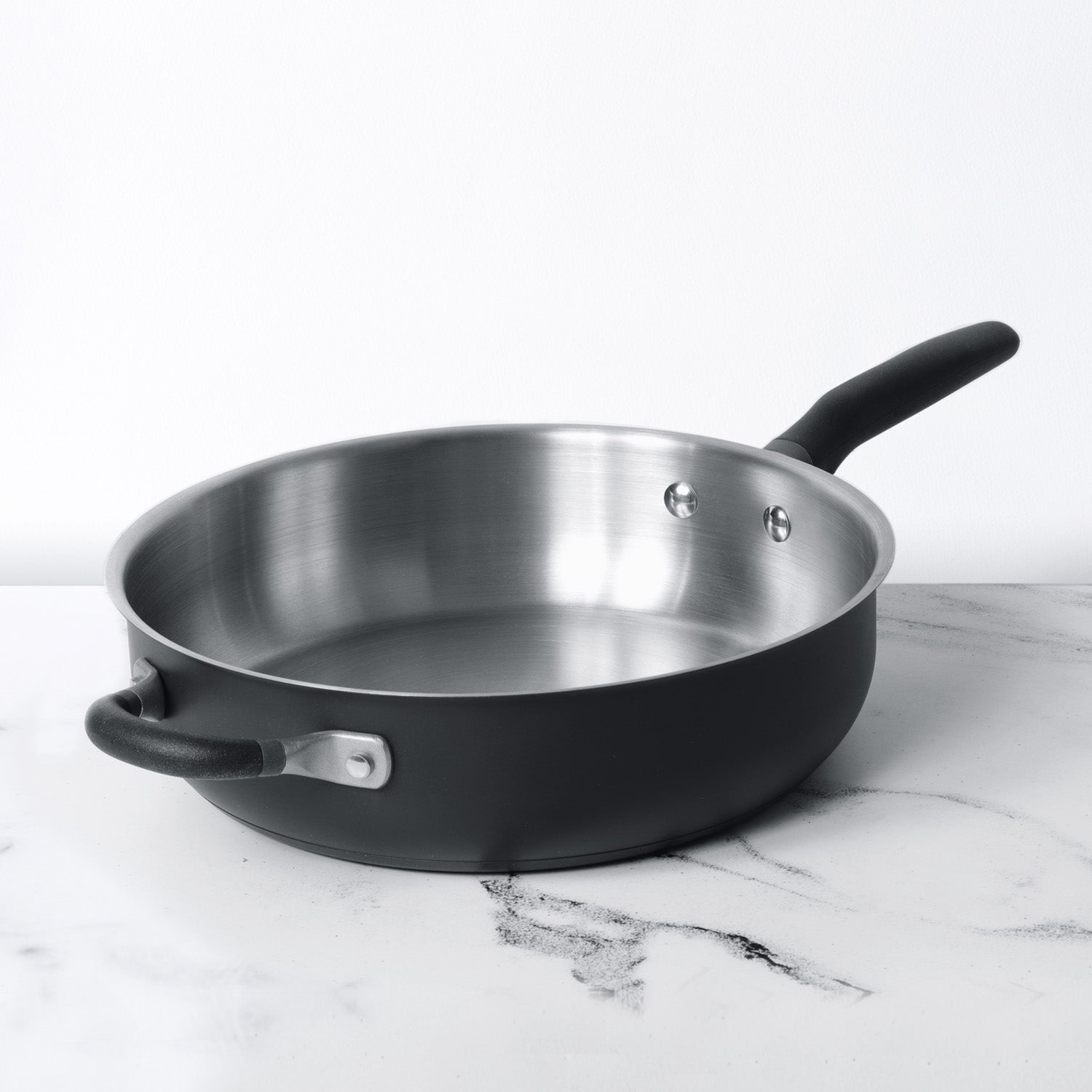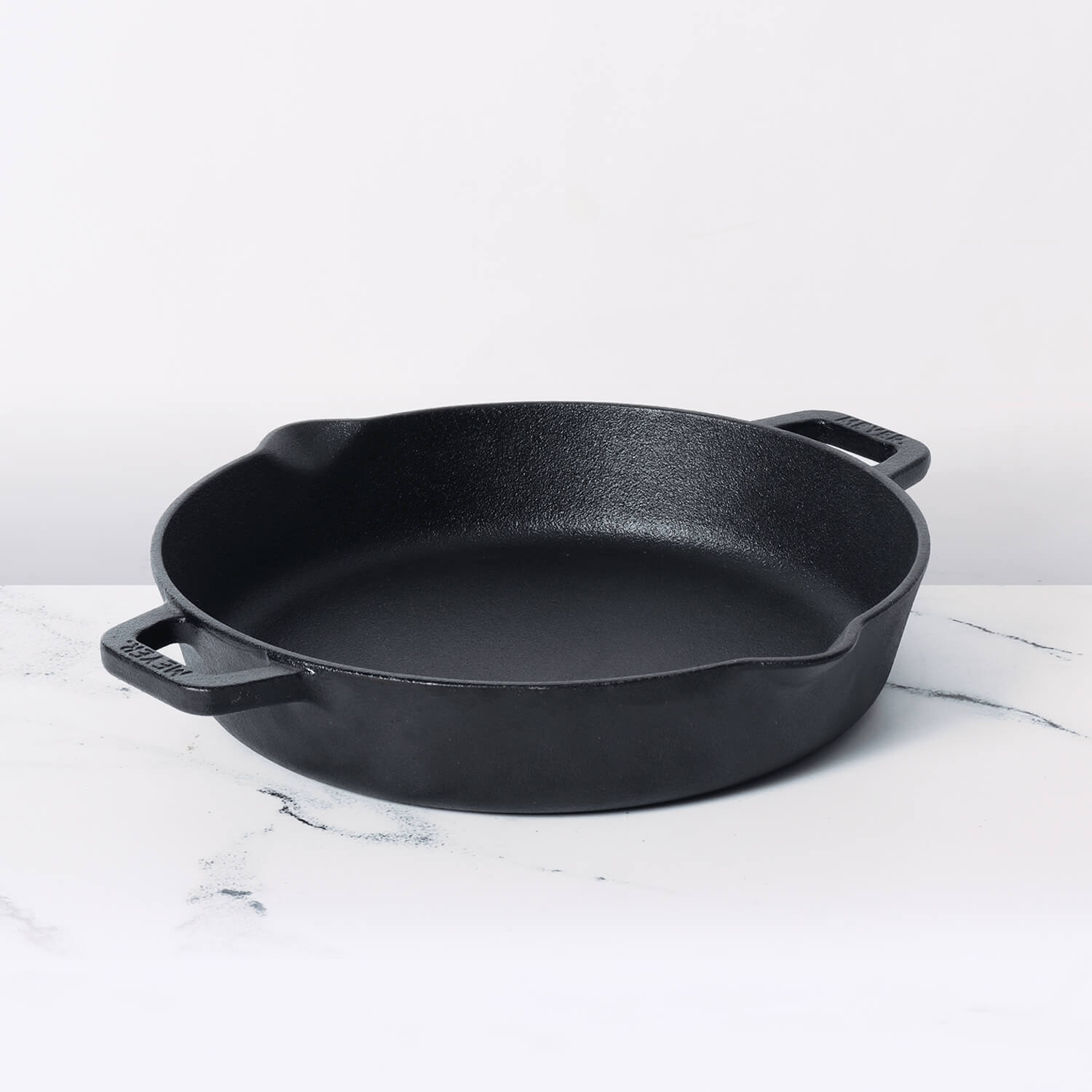Non-stick cookware has become indispensable in Indian kitchens. It helps us prepare everyday meals with less oil, less time, and far less mess. Whether you're making dosas for breakfast, sautéing onions for a quick curry, or reheating leftovers, a good non-stick pan offers unmatched convenience.
However, non-stick cookware also requires proper care—especially in Indian households where we cook frequently, use strong spices, and prepare everything from dry sabzis to tadka-based gravies. With a little attention and daily care, your non-stick cookware—especially high-quality options like Meyer non-stick tawas, kadhais, frypans, and woks—can easily last for years while maintaining top performance.
Table of Contents
- 1. Choose Low to Medium Heat—Your Non-Stick Pan Will Thank You
- 2. Use Gentle, Non-Metal Utensils—It Makes a Big Difference
- 3. Preheat Slowly and Avoid Heating the Pan Empty
- 4. Avoid Aerosol Sprays—They Leave Sticky Residue
- 5. Let the Pan Cool Before Washing—Protect It from Thermal Shock
- 6. Soak, Don’t Scrub—Especially for Masala Stains
- 7. Store Smart—Prevent Rubbing, Scratching, and Stacking Damage
- 8. Use a Small Amount of Oil for Better Texture and Browning
- 9. Don’t Cut, Chop, or Mash Food in the Pan
- 10. Know When to Replace—Non-Stick Cookware Has a Natural Life Cycle
- 11. Bonus: Additional Care Tips for Indian Kitchens
- 12. Conclusion
Choose Low to Medium Heat—Your Non-Stick Pan Will Thank You
Indian cooking is full of high-heat techniques:
- Bhuna masala
- Tadka
- Searing paneer
- Frying spices
But non-stick pans are engineered for moderate heat cooking. High flame deteriorates the coating faster, causes discoloration, and reduces non-stick performance.
Why low-to-medium heat is ideal
- It protects the non-stick surface from thermal fatigue.
- Ensures even heating and prevents hotspots.
- Keeps the coating functioning smoothly for longer.
- Maintains the pan’s structural integrity.
High-quality surfaces such as those on the Meyer Non-Stick Clad Plus tolerate everyday use brilliantly when kept on medium flame.
If you need high heat, switch to:
-
Meyer Cast Iron Tawa (for rotis, charring, and searing)
-
Meyer Tri-Ply Stainless Steel Frypan (for browning and sautéing)
-
Meyer Hard Anodized Kadai (for deep frying or high-flame cooking)
Use Gentle, Non-Metal Utensils—It Makes a Big Difference
Metal spatulas, steel ladles, or heavy tumblers (used for pressing dosas) can scratch and permanently damage the non-stick layer.
Better alternatives
- Silicone spatulas
- Rubber scrapers
- Wooden spoons
- Nylon ladles
Pairing your pan with a Meyer Silicone Spoon or Spatula ensures the surface remains smooth and scratch-free even with frequent use.
Most scratches on non-stick pans are caused not by cooking—but by metal utensils.
Preheat Slowly and Avoid Heating the Pan Empty
A common habit is placing an empty non-stick tawa or pan on high flame to “quickly heat it.” This weakens the coating over time.
Right way to preheat
-
Place the pan on low heat.
-
Add a few drops of oil or ghee.
-
Swirl or spread it.
-
Increase heat to medium if required.
Slow preheating extends the life of every Meyer non-stick surface and gives you better dosa texture, softer rotis, and evenly sautéed vegetables.
Meyer Stainless Steel Cookware Kadai with Lid, 30cm
Avoid Aerosol Sprays—They Leave Sticky Residue
Aerosol spray oils seem convenient but are harmful for non-stick.
Why avoid them
-
They leave a sticky film on the surface.
-
Difficult to remove completely.
-
Reduces non-stick effectiveness.
-
Attracts dirt and burnt spots.
Use instead
-
Brush or spray a tiny amount of oil
-
Apply ghee with a silicone brush
-
Use a teaspoon of oil wiped across with a tissue
All Meyer non-stick pans are engineered to cook with very little oil, so even a thin layer is enough.
Let the Pan Cool Before Washing—Protect It from Thermal Shock
Placing a hot non-stick pan under cold water may warp it. This can cause:
- Uneven cooking in the future
- Wobbling on gas stoves
- Damage to the non-stick coating
- Loosening of rivets or base layers
Cleaning routine
- Remove the pan from heat
- Let it cool for 5–10 minutes
- Wash with mild soap and a soft sponge
Meyer non-stick cookware is extremely easy to clean—soap and water are enough.
Soak, Don’t Scrub—Especially for Masala Stains
Indian food uses turmeric, chilli, onion, and tomato—all of which can stick unexpectedly.
For stubborn residue
- Fill the pan with warm soapy water
- Let it soak for 10–15 minutes
- Wipe with a soft sponge
- Rinse well
This ensures gentle cleaning without damaging the surface.
If you cook masala-rich dishes often, consider pairing your non-stick cookware with a Meyer Hard Anodized Kadai, which is more suitable for strong flavours and deep roasting.
Store Smart—Prevent Rubbing, Scratching, and Stacking Damage
Stacking non-stick pans directly on top of each other is a major cause of scratches.
Protective solutions
- Insert a soft cotton cloth
- Use a microfiber towel
- Place pan protectors
- Slip a kitchen napkin between pans
This is especially important if you own multiple non-stick pieces like:
The small act of layering adds years to your cookware.
Use a Small Amount of Oil for Better Texture and Browning
While non-stick pans require very little oil, a completely oil-free approach sometimes:
-
Reduces browning
-
Makes dosas patchy
-
Prevents crisping
-
Causes vegetables to steam instead of sauté
Use a few drops for:
- Uttapam edges
- Crisp dosas
- Shallow-frying paneer
- Golden-brown tikkis
- Roasted vegetables
All Meyer non-stick products heat evenly, so even ½ teaspoon of oil gets distributed beautifully.
Don’t Cut, Chop, or Mash Food in the Pan
Cutting roti, slicing omelettes, or mashing potatoes directly in the pan may seem convenient—but it's harmful.
Avoid using
-
Knives
-
Pizza cutters
-
Steel mashers
-
Forks
Instead, transfer food to a plate or chopping board before cutting.
If you need a pan for heavy mashing (like pav bhaji), switch to the Meyer Cast Iron Kadai or Meyer Tri-Ply Steel Cookware, which can handle metal utensils.
Know When to Replace—Non-Stick Cookware Has a Natural Life Cycle
Even the best non-stick cookware eventually reaches the end of its lifespan.
Signs to replace your pan
-
Surface has become rough
-
Food sticks even with oil
-
Coating is scratched or peeling
-
Colour has faded severely
-
The base is warped
-
Pan wobbles or heats unevenly
Upgrading to a new Meyer Non-Stick Pan ensures safe, hygienic, and efficient cooking.
Bonus: Additional Care Tips for Indian Kitchens
Dedicated dishes for non-stick pans
Use non-stick for:
- Omelettes
- Dosas
- Cheelas
- French toast
- Cutlets
- Stir-fries
- Light sabzis
- Pancakes
Avoid non-stick for:
- Bhuna-heavy recipes
- Deep frying
- Tempering whole spices
- High-heat searing
- Tadka with mustard or cumin
Use:
- Meyer Cast Iron for high-heat tasks
- Meyer Tri-Ply for curries
- Meyer Hard Anodized for deep frying and multipurpose Indian cooking
Conclusion
Non-stick cookware brings ease, speed, and low-oil cooking to everyday Indian meals. But getting the best performance—and longest lifespan—depends on how you care for it. Small habits like cooking on medium heat, using silicone utensils, avoiding metal, washing gently, and storing properly can add years to your cookware’s life.
When paired with the durability and high-quality coatings of Meyer Non-Stick Cookware, these care practices offer a seamless cooking experience, day after day. Whether you're flipping dosas, sautéing vegetables, or making quick breakfast dishes, Meyer’s non-stick pans ensure effortless release, healthier meals, and consistently reliable performance.













Leave a comment